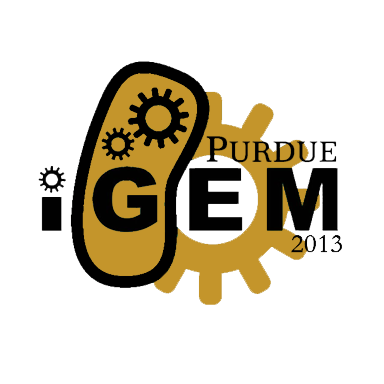Goal
Background
One of the overwhelming problems that sypnthetic biologists face on a daily basis is the variability in genetic constructs. With our ever persistent drive to find a way to develop a standard set of parts for synthetic biology, it is often overlooked that these “standard” parts do not interact the same way that a nut and a bolt do. Sure the threads of each must match for compatibility, but you are guaranteed that a matching set of nuts and bolts will hold together a table just as well as they will hold together a chair, or a piece of metal machinery, or the engine of your car.
When we place together a promoter with a new gene of interest we do not yet have these compatibility rules to know how a promoter will work with this gene of interest. We, as synthetic biologists, still don’t know that one promoter/gene will work the same way in one strain of E. coli as they will in another E. coli. For synthetic biology to truly emerge as a field that can capitalize in industry, we must find novel ways of engineering biological systems reliably using our own standard parts.
Protocol for Using the Taguchi Method
Experimental Design
Experiment
Design experiment to test results of the 27 different circuits in the 3 different strains of E. coli for robustness.Purpose
The final goal of the project is to determine if the Taguchi method will give the same results as a full factorial. In this case we want the Taguchi method to help us determine the most robust circuit design for the expression of GFP. To do this we need to know what the output intensities of GFP are for each circuit in each strain. These can then be analyzed statistically to determine which has the least variance between strains. We are not necessarily looking for the most expression (though one qualifying factor for success is that the GFP is expressed) rather how consistent the expression is between strains.Procedure
- Standardized curve relating OD to cell number
- 3A assembly 27 different constructs all expressing GFP
- Grow the constructs to exponential phase
- Measure the OD and GFP expression of cells
- Calculate the GFP expression/individual cell
- From standardized curve determine the number of cells in solution from OD
- Divide total GFP by number of cells to obtain GPF expression/cell
- Statistically determine which construct has most robustness
- Standardized Curve Relating OD to Cell Number
- Grow up cells from each strain of E. coli in LB media along with any required antibiotic resistances
- Dilute stock cell solution down in 5 ML of LB media so that the initial OD reading is 0.0
- Grow cells at 37⁰C for 6 – 8 hours checking OD every hour to half hour
- Measure a sample of cell solution at each time point with Coulture Counter
- Plot cell number vs. OD for each strain to obtain standardized curve
- 3A Assembly of Constructs Expressing GFP
- From the Taguchi Orthogonal Array, determine which genetic circuits to construct
- Using iGEM’s protocol for 3A assembly (insert link here)
- Calculate the GFP Expression/Individual Cell
- After all three strains are transformed with each construct for a total of 81 constructs to test, use Cary Eclipse Fluorescence Spectrophotometer and OD to gain total GFP expression and number of cells
- Divide total expression by number of cells to gain GFP expression per cell
Challenges and Failures
Transformations
There were many different factors that contributed to unsuccessful transformations. The first was improper lab technique as we went through the summer learning the basics of aseptic technique and growing cultures. The next was cells that had been thawed too many times rendering them incompetent which was not realized until later on in the process. Finally, changes in our working space altered the growing conditions so as to not be optimized for E. coli growth which set us back in our schedule.We learned that although we take for granted the beneficial act of bacterial cells up-taking DNA, these cells cannot maintain a state of competency forever. In a natural environment this would increase their vulnerability to outside toxins that could also enter the cells through engorged pores.
3A Assembly
Our biggest mistake in the process of 3A assembly was purifying the DNA after digestion and ligation. Due to lack of lab equipment, purification via gel extracting was unavailable until just recently. Ethanol purification was tried, but failed as it seemed most of the DNA became trapped in the supernatant. This may be due to not enough sodium acetate for the DNA to precipitate out. Nonetheless, our DNA results were low which resulted in continued failed attempts at transformations.Future Work and Changes
When continuing the work with robustness of genetic circuits, we will be taking the following changes into account:1. Finding promoter+RBS parts to reduce the amount of 3A assembly as well as the number of tests that need to be done.
2. Gaining the use of a gel purification kit for increasing our DNA results.
3. Finding a lab space with correct E. coli growth conditions that can be closely monitored.
 "
"
